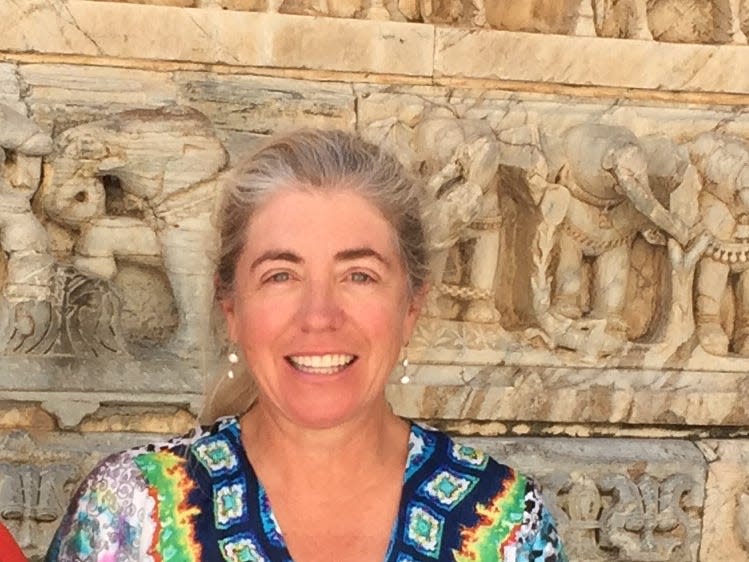I've got your back
- Oops!Something went wrong.Please try again later.
I have a family member who is now experiencing multiple spinal issues. Years ago, he said he would go to a yoga class with me, but it had to be a hot yoga class. Of course, I immediately found a hot yoga class, and off we went. The class ranks at the top of one the worst yoga experiences in my lifetime, and unfortunately, he never tried yoga again. I have gone to other hot yoga classes just to make sure it wasn’t just that one class. The lesson I learned is that before taking any yoga class, consider any medical conditions you may have, and speak to your doctor about whether yoga or a hot yoga class is right for you.

You may hear the terms “hot yoga” and “Bikram yoga” used interchangeably, but they’re not the same. Bikram yoga, developed by a yogi named Bikram Choudhury, is done in a room heated to 105°F (41°C) with 40 percent humidity. It consists of 26 poses and two breathing exercises that are done in the same order in every class. Bikram yoga became a cult favorite style of hatha yoga and some celebrities, including Elvis Presley, Jeff Bridges, Shirley MacLaine, Barbra Streisand, and Raquel Welch embraced it. Bikram Choudhury, has also been the subject of many lawsuits and allegations mostly for sexual assault and there's even a whole Netflix documentary about him.
Hot yoga just means that the room is heated above normal room temperature. The heat can be set to whatever the yoga instructor wants, though it’s typically between 80 and 100°F (27 and 38°C). Like any yoga classes, they vary, and you should find the best class and teacher that suits you. While my family member never tried yoga again, I wonder if he would be experiencing the health issues he has now had he tried a different kind of yoga class and embraced practicing.
I am thankful that I started practicing Iyengar yoga, named for and developed by B.K.S Iyengar. It is a form of yoga that has an emphasis on detail, precision, and alignment in yoga postures. It also makes use of props such as blocks, belts, and blankets to aid the student to minimize the risk of injury or strain. While the Iyengar blanket folding and numerous props can become frustrating at times, they serve a valuable purpose, and I am thankful to have the props to use in my practice. It's not to say that yoga is the answer to all orthopedic issues, but I know from my own experience that learning proper alignment in yoga enhanced my spinal health.
Most people don’t give their spine any thought until they some type of have back pain, but spinal health is critical to good health. The spine has three major functions. First, it protects your spinal cord, a complex structure of nerves and is a master control system that is part of your central nervous system between your brain and your body. It carries messages that allow you to move and feel sensation, as well as helping with the function of vital organs and systems. Second, your spine provides structural support and balance to help you maintain an upright posture. It supports your whole body. Third, it enables flexible movement in your body, allowing you to bend, flex, and twist.
Here a few tips to help you protect your spine every day. Get enough sleep because your body repairs itself while you sleep. Try not to sleep on your stomach; that puts extra pressure on your spine. Before you even get out of bed considering moving your spine in different directions such as a full body stretch to short bananasana. For spinal health stay active, stretch regularly, and strengthen your core. When lifting heavy objects, be-careful with your technique, use your legs rather than your back. If an item is too heavy, don’t attempt to lift it yourself; ask for help. Also, carrying excess weight can strain the lower back due to the added stress on the muscles, ligaments, and tendons in the spinal area.
One of the easiest things you can do for you spine, and your over-all health is to stay hydrated. Water helps maintain soft tissue elasticity and fluidity in the joints, which is important for your spinal discs. When your spinal discs shrink due to dehydration, you may suffer from herniated or bulging discs. A recent study has found that people who are better hydrated appear to live longer and develop fewer chronic diseases. Here is a link to a study of hydration:
Just as you have a physical body, you also have an energy body, and your spine is the superhighway of that energy body. The spine is the basis for individual consciousness. B.K.S. Iyengar said: “It is through the alignment of the body that I discovered the alignment of my mind, self, and intelligence.” Here is a link to a piece I wrote about the spiritual spine that includes a lovely meditation. In times of trouble, we say to others, “I’ve got your back.” While it’s metaphorical, it’s no wonder that we have an expression in our language that points to the importance of supporting the spine.
Feel free to share your thoughts with me: ashton@ashtoncannon.com.
Ashton Graham is an educator, book publisher, photographer, cowgirl and yoga teacher. She is currently studying to become a yoga therapist and lives on a ranch in West Texas. Visit www.ashtoncannon.com to learn more.
Read more Maintaining Balance:
This article originally appeared on Las Cruces Sun-News: I've got your back

